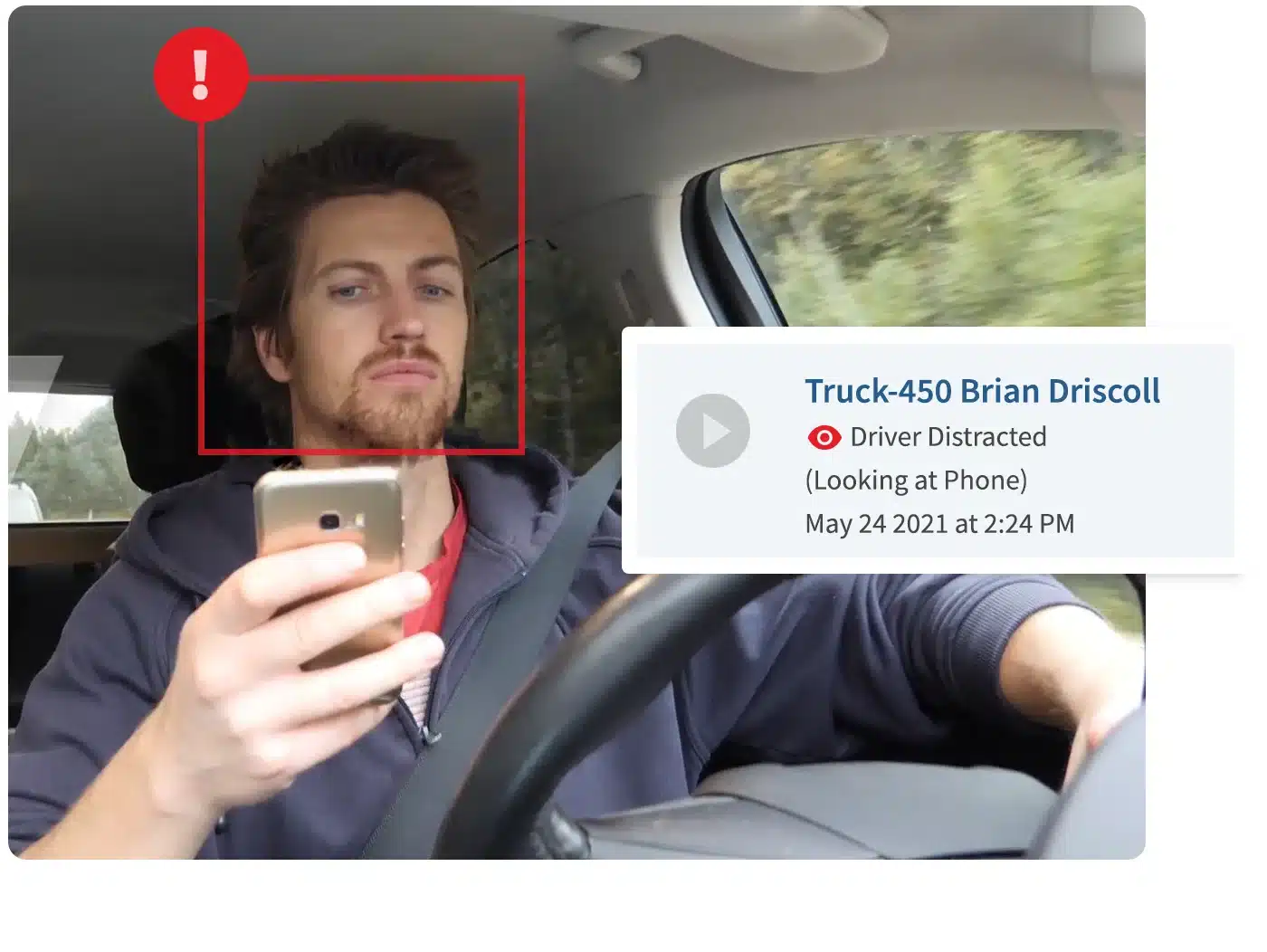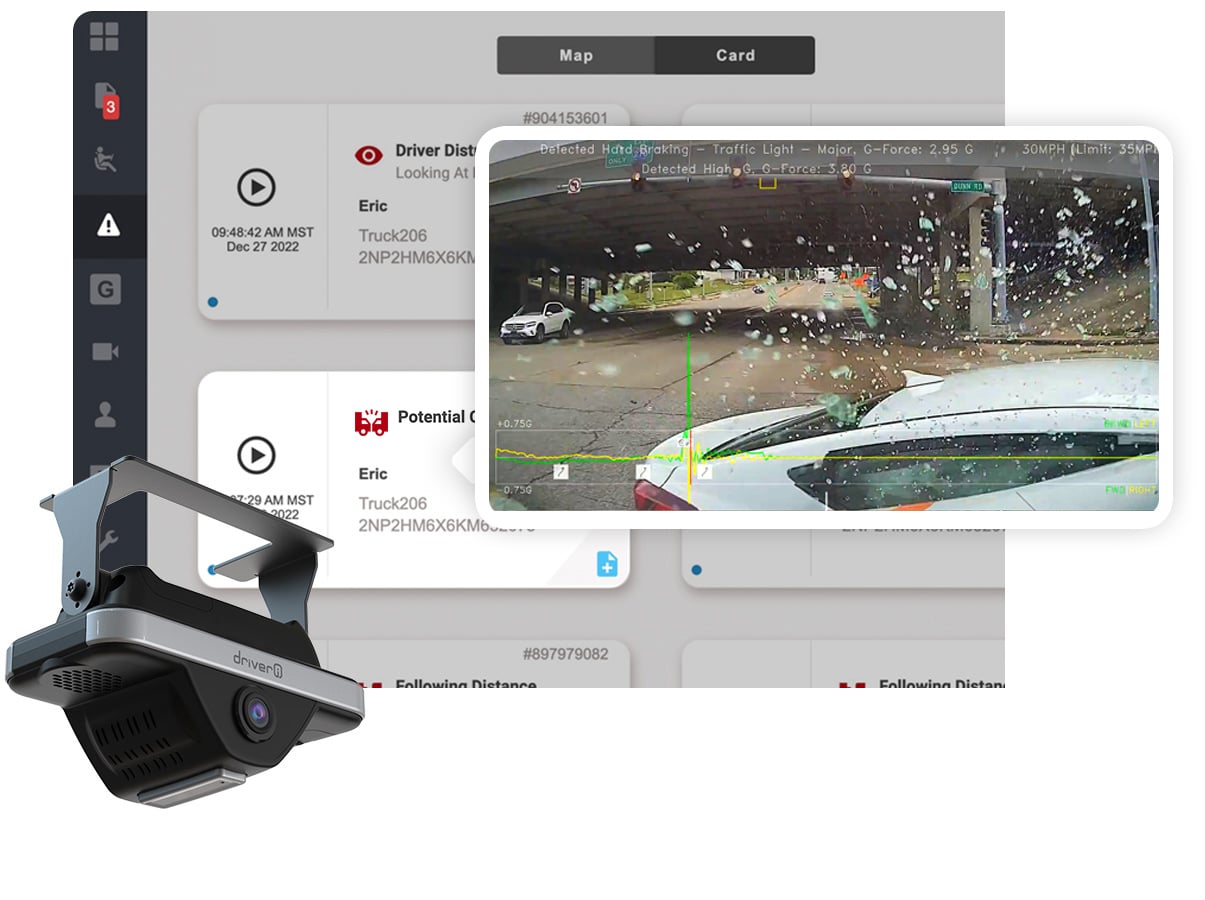
April Fools:
Distracted Driving Month Highlights the Dangers of Acting a Fool Behind the Wheel
April 1 brings fools. Unfortunately, all too often, those fools are behind the wheel, sending text messages, chugging down a macchiato, or scrolling through their library to choose the absolute best song to jam to as they weave across lanes and tailgate the Subaru in front of them sporting the Baby on Board sticker.
April is Distracted Driving Awareness Month, a time when we shine the spotlight on U.S. drivers’ dangerous driving habits that not only cost millions of dollars a year in accidents and lawsuits but thousands of lives as well.
For fleets, it means even more. This month forces fleet managers and drivers to dive deeper into driver safety fundamentals, focus on driver coaching and re-examining the tools, techniques and technologies they use to reduce accidents, save money, and protect lives.
According to Cambridge Mobile Telematics, distracted driving is getting worse. Drivers were 30% more distracted in February 2022 than they were just two years prior, the worst month of distraction in the U.S. since before the pandemic.
Eyes on the Road, Not the Phone
Distracted driving—any activity that diverts attention from the task of safe driving—has become a significant danger, and mobile phones are Public Enemy #1.
According to the National Highway Transportation Safety Administration (NHTSA), distracted driving claimed 3,142 lives in 2020 and injured more than 420,000 drivers. The AAA Foundation for Traffic Safety found that distracted driving is responsible for nearly 60% of teen crashes, and the National Safety Council reported that cellphone use accounted for 27% of all car accidents.

A driver going 55 MPH travels the length of a football field in the time it takes to glance to read or send a text diverts attention from the road for five seconds, long enough to travel the length of a football field. In fact, the NHTSA reports that drivers are distracted by their cellphones 10% of the time they are behind the wheel, increasing the risk of a crash by 165%.
Unfortunately, drivers tend to think their behavior on the road is just fine. It’s the other guy that’s the problem. While 87% of drivers said texting and driving is dangerous, another study showed 70% of drivers admitted to using a mobile device while driving in the previous 90 days.
Distracted Driving Poses Significant Risks for Fleets on the Road
No industry is more impacted by distracted driving than transportation, and public and private fleet managers must deal with the rising liability and safety risks it brings. According to the Net Employers for Traffic Safety (NETS), crashes caused by distracted driving cost employers $18.8 billion in 2018.
Of course, it is not just your drivers you have to worry about. Younger drivers that grew up living on their phones and electronic devices have carried those bad habits to the road and—as noted above—70% of drivers admit to using a mobile device while behind the wheel. One or more of those distracted drivers may be one lane over from your vehicle.
While not all distracted driving incidents lead to an accident, they can be extremely costly to your operation. A distracted driver might miss a turn or fall behind schedule, impacting fuel usage or customer service.
Distracted driving impacts your fleet in several ways:
Driver injury and costs: An accident involving your driver could result in medical expenses and workers’ compensation claims.
Vehicle damage: Vehicle damage requires costly repairs or replacement costs and leaves fleet operators with one fewer vehicle on the road.
Increased insurance costs: Even minor accidents can lead to higher insurance premiums. A driver’s furtive glance at a cellphone could lead to significantly higher bills.
Expensive lawsuits: Distracted driving accidents can lead to expensive lawsuits. If someone claims your driver’s actions caused injury or loss, the company can be put at risk.
Damaged reputation: Distracted driving incidents can lead customers or potential customers to believe your company doesn’t pay attention to details or is unreliable.
Digital Tools to Address Distracted Driving
Technology is part of the distracted driver problem but it is also the solution. For instance, GPS tracking collects pivotal data and provides real-time alerts of driver behaviors that could be a sign of distracted driving. Smart camera technology can monitor facial and eye movements to determine the use of a phone or other device, or detect driver fatigue, prompting an alert or warning to the manager and driver. Combined, effective tech provides benchmarks to help prevent accidents, reduce litigation and lower insurance costs by monitoring:
Following Distance: Tailgating is one of the most dangerous driving habits and a chief cause of accidents. Smart Camera tech determines if your drivers violate the three-second rule and helps correct this behavior.
Speed: According to the National Highway Traffic Safety Administration, more than a quarter of all traffic fatalities were related to speeding. Telematics software alerts fleet managers if a driver exceeds a certain speed.
Running Red Lights or Stop Signs: This behavior is a significant source of injuries and can lead to much higher insurance rates if one of your drivers is cited. AI-powered smart cameras inform fleet managers of this dangerous—and potentially expensive—behavior and provide the data to address it with further training.

Better Coaching = Better Driving: Five Key Steps
The rise of smart data—GPS Tracking and dash cam solutions—in commercial and government fleets provides the tools for more teachable moments. Combining GPS tracking, dash cams, and driver coaching is the perfect solution to prevent accidents rather than just react to them. It’s the best way to reduce insurance costs and losses related to potential lawsuits. Evaluating the data from these devices and giving drivers fact-based feedback is the key to safer fleets.
1. Getting Started
Select the technology you want to use, create safety policies around it, establish benchmarks, and get driver buy-in for the solutions.
2. Train Drivers on the Technology
3. Critical Measurements
4. Setting Goals for Improvement
5. Make Driver Coaching Part of Your Culture
How Are You Combating Distracted Driving?
The journey to stop distracted driving is completed in small steps, not one fell swoop. Start with the basics to instill a true culture of safety in your fleet. Technology is here to help. Does your organization need GPS tracking, dash cams, or both?
Reach out to set up a demo and make your fleet a king…and not an April Fool. #JustDrive





